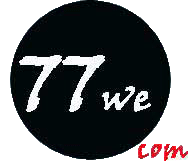Papa John’s exec: QR codes are best way to bridge digital from print...
By Rimma Kats
October 19, 2011
NEW YORK – A Papa John’s executive at the Mobile Shopping Fall conference said that QR codes are the best way to bridge digital from print, connecting consumers with interactive content within a static medium.
During the “Case Study: Finding Your Edge In An Increasingly Competitive Mobile Environment” panel, the executive gave best practices for marketers looking to dip their toes in the mobile space. Papa John’s has been ramping up its game in the space with a mobile site, applications and QR campaigns.
“When you get to real-time transactions, pizza is really hard,” said Jim McDonnell, marketing manager of digital media and emerging channels at Papa John’s International Inc., Louisville, KY.
“You have something that’s perishable and has to get out the door fast,” he said. “We not only have to get the order right but have a have a good experience for the customer.”
Mobile site first
According to Mr. McDonnell, optimizing a mobile presence is the first step marketers should take.
Many marketers who want to delve into the mobile space are not sure whether they should roll out a mobile site or applications first.
However, having a mobile-optimized site is key first because marketers can reach more consumers rather than figuring out whether they should build an iPhone or Android application.
When companies do decide to roll out mobile applications, it is important to see where the mobile traffic is coming from and the device consumers are using to place orders.
“We’re still getting a lot of orders from BlackBerry devices,” Mr. McDonnell said. “But, we’re not seeing the same shopping as the other richer platforms.
“Windows Phone 7 is sold, but we’re not building an app for it soon,” he said. “We’re not seeing enough traffic to justify it.
“The richer the ecosystem, the more consumer choices available that drives more innovation and more opportunity for us.”
According to the executive, when marketers decide to launch a mobile app it is important to see if they can leverage the hardware and leverage the device’s camera.
“I love anything that can leverage the camera because you’re bridging the physical and mobile world,” Mr. McDonnell said.
Additionally, the executive said that SMS is a great tool to engage consumers.
“SMS is great for mobile,” Mr. McDonnell said. “It’s immediate.
“I love push notifications,” he said. “There’s no carrier and no aggregator.
“The consumer has all the power – they can turn them on and they can turn them off.”
Mobile bar codes
Mr. McDonnell said that mobile bar codes are an effective way to get consumers engaged.
The company ran a QR code campaign that when scanned, took consumers to a video of the company’s founder who was telling the story of how he started his business.
“Not every pizza box out the door gets scanned, but that’s OK,” Mr. McDonnell said. “For those that do get scanned, it helps build that relationship.
“QR codes are the best way to bridge digital from print,” he said.
The executive also said that there is going to be huge growth in HTML5 and tablets in the near future.
“With HTML5, the capabilities are there,” Mr. McDonnell said.
“Tablets are also huge,” he said. “Speed is going to be really important.
“It’s important to the customer more so than the marketer.”
